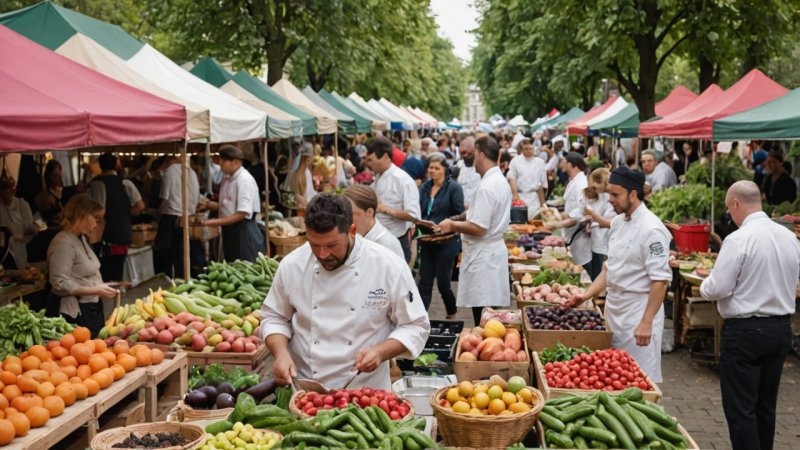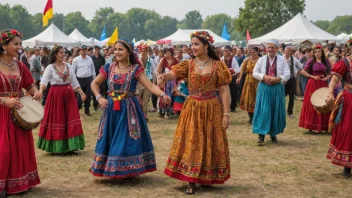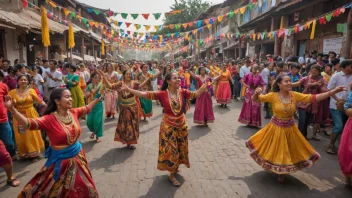In our fictional interview today, we have the pleasure of speaking with Dr. Clara Winters, a renowned culinary anthropologist and environmental scientist. With over 20 years of experience studying the intricate relationship between climate and cuisine, Dr. Winters has traveled extensively across various continents, analyzing how local weather patterns shape culinary practices. This engaging conversation aims to delve into the fascinating ways climate influences the food we eat around the world.
Understanding the Connection Between Climate and Cuisine
Interviewer: Dr. Winters, can you explain how climate affects culinary practices in different regions?
Dr. Winters: Absolutely! Climate plays a crucial role in determining what ingredients are available to people. For example, in tropical regions, the warm climate allows for a diverse range of fruits and vegetables to thrive, leading to vibrant and fresh dishes. In contrast, colder climates limit agricultural diversity, often resulting in heartier meals that rely on preserved ingredients. This difference is evident in the contrast between a light, refreshing Thai salad and a rich, warming Scandinavian stew.
Seasonal Eatings: How Weather Shifts Influence Menus
Interviewer: How do seasonal changes impact local cuisines?
Dr. Winters: Seasonal changes are significant in shaping local menus. In many cultures, food is closely tied to the seasons. For instance, in Italy, you’ll find that summer dishes are often light and incorporate fresh, seasonal produce, while winter recipes tend to be heartier, focusing on preserved foods like cured meats and canned tomatoes. This reflects not only the availability of ingredients but also the way people adapt their cooking to suit the temperatures and weather conditions.
Cultural Adaptations to Climate
Interviewer: Can you give us examples of how specific cultures adapt their cuisines to their climates?
Dr. Winters: Certainly! Let’s take a look at Japan. The Japanese have developed a culinary style that emphasizes seasonal ingredients, which is deeply rooted in their cultural practices. For instance, cherry blossom season heralds the arrival of delicate sakura mochi, while winter brings hearty dishes like nabe, a one-pot stew, perfect for warming up during colder months. Similarly, in the Andes, indigenous communities have long used potatoes in myriad ways, adapting their cooking to the high-altitude climate that influences crop growth.
The Impact of Climate Change on Culinary Traditions
Interviewer: With climate change becoming a pressing global issue, how do you see it affecting culinary traditions worldwide?
Dr. Winters: Climate change poses a significant threat to culinary traditions. As temperatures rise and weather patterns shift, some regions may find it increasingly difficult to grow traditional crops. We’re already seeing this in places like Italy, where changing weather is affecting grape production, leading to concerns for wine production. Additionally, traditional culinary knowledge is at risk as younger generations may turn away from indigenous practices that are no longer as viable in a changing climate.
Preserving Culinary Heritage in a Changing Climate
Interviewer: What can be done to preserve culinary heritage in the face of these changes?
Dr. Winters: It’s vital to document and share traditional cooking methods and ingredients. Community initiatives that focus on sustainable agriculture and biodiversity can also be effective. Encouraging young chefs to explore and innovate within their traditional cuisines can help keep these practices alive. Moreover, culinary tourism can foster a greater appreciation for local foods and cooking methods, creating a demand that supports their preservation.
The Future of Global Cuisine
Interviewer: What do you envision for the future of global cuisine as climate continues to change?
Dr. Winters: I believe we’ll see a fusion of traditional practices with modern techniques, as chefs adapt to new realities. We may also witness the rise of ‘climate cuisine,’ where chefs focus on sustainable, local, and seasonal ingredients. This could lead to exciting new culinary trends that reflect the climate-conscious choices of both chefs and consumers. Ultimately, the future of global cuisine will be about resilience and adaptability, ensuring that food remains a vital part of our cultures despite the challenges posed by climate change.






